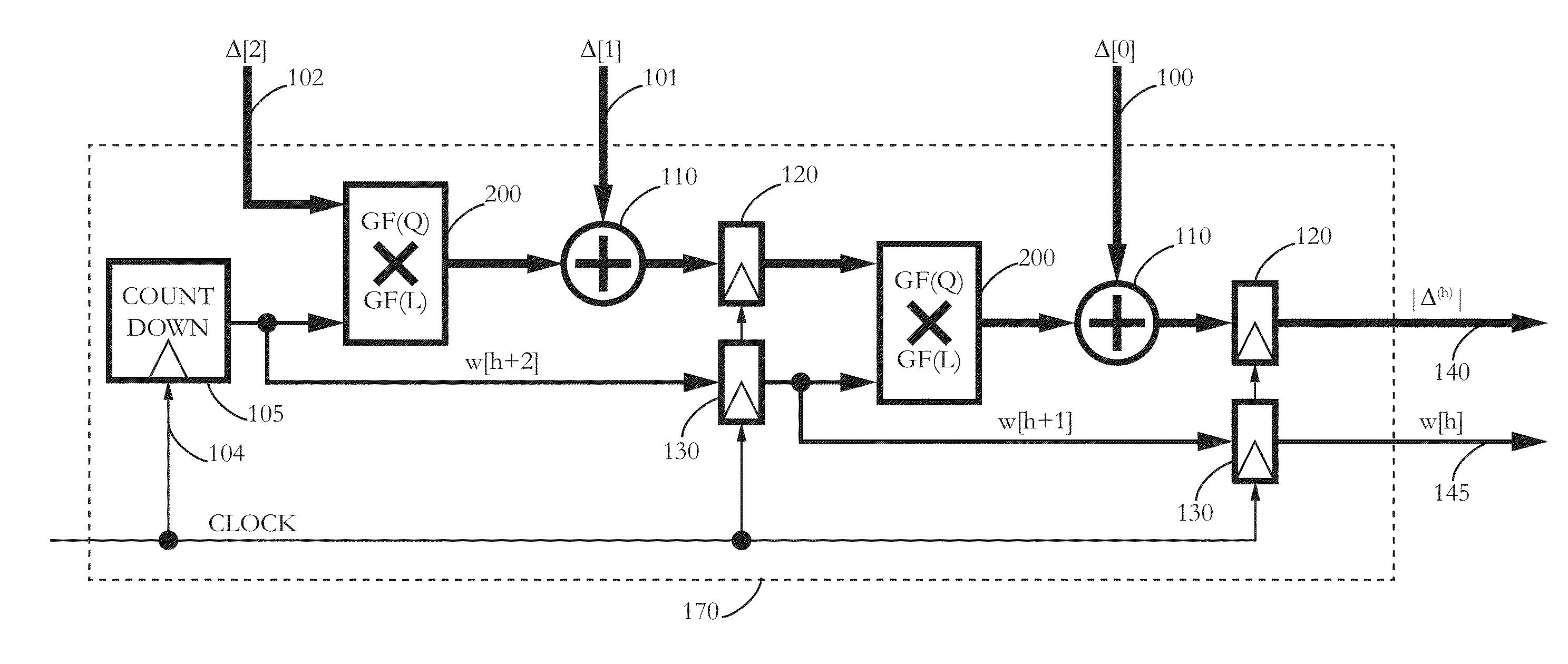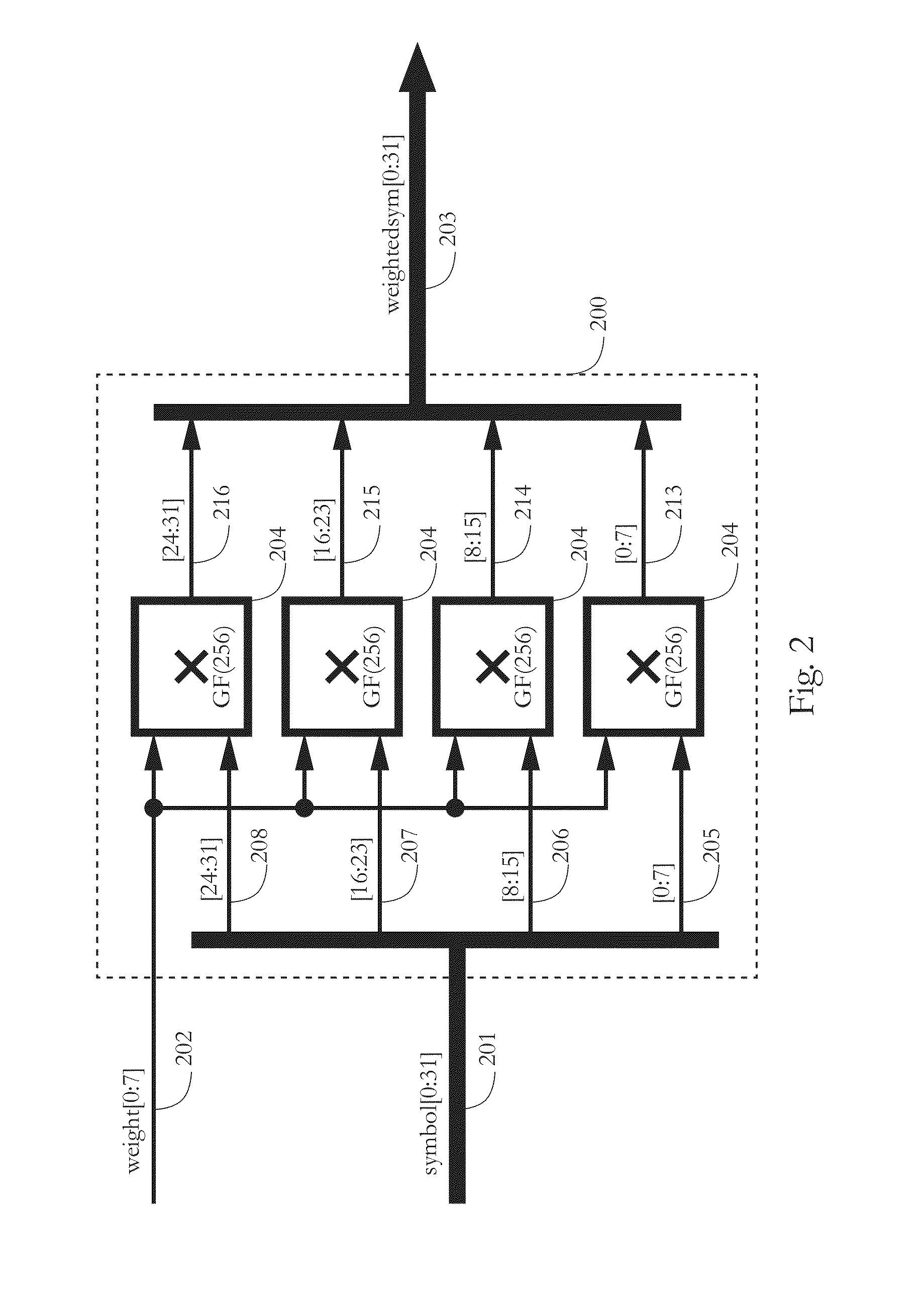Additional Error Correction Apparatus and Method
- Summary
- Abstract
- Description
- Claims
- Application Information
AI Technical Summary
Benefits of technology
Problems solved by technology
Method used
Image
Examples
Embodiment Construction
I. Locating t Errors with S Erased Symbols and (r=2t+S−1)
[0028]A. Codeword Definition
[0029]Let {c0, c1, . . . , cn−r−1} be a sequence of data symbols to be encoded, and let {c0, c1, . . . , cn−1} be a corresponding sequence of symbols at the output of a systematic forward error correction (FEC) encoder. The corresponding output sequence is known as a (n, k) codeword with r symbols of redundancy and (k=n−r) symbols of data. In the notation used here, the FEC encoder provides codewords with r weighted sums satisfying the equations
Sp=∑j=0n-1wjp-p0cj=0
where 0≦p
{w0,w1, . . . ,wn−1}
is preselected, with each weight distinct and nonzero. The weighted sums are determined using finite field products and additions, regarding the code symbols and weights as elements in finite fields of characteristic two. The code symbols are preferably members of a large finite field GF(Q), whereas the pre-determined weights are preferably members of a locator subfield GF(L) of the symbol...
PUM
 Login to View More
Login to View More Abstract
Description
Claims
Application Information
 Login to View More
Login to View More - R&D
- Intellectual Property
- Life Sciences
- Materials
- Tech Scout
- Unparalleled Data Quality
- Higher Quality Content
- 60% Fewer Hallucinations
Browse by: Latest US Patents, China's latest patents, Technical Efficacy Thesaurus, Application Domain, Technology Topic, Popular Technical Reports.
© 2025 PatSnap. All rights reserved.Legal|Privacy policy|Modern Slavery Act Transparency Statement|Sitemap|About US| Contact US: help@patsnap.com



